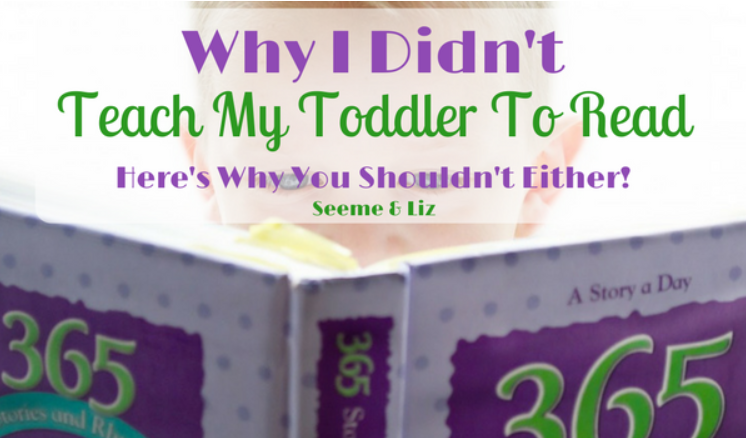What Are The Terrible Two’s?
All children are different and not every child will go through the same stages and phases at the same time.
If your child did not go through the terrible two’s (one of mine did while the other didn’t), just wait, they may go through the terrifying threes, the ferocious fours, the fiery fives, sour sixes, etc.
Some children will not only go through one of these phases, but many of them.
My son definitely went through the sour sixes. My daughter will be 14 this year and unfortunately it does not get easier, but with the right tools it becomes more manageable.
The terrible two’s are just what they sound like…terrible!
Your child often acts irrationally and it seems like nothing you do will help. Everyone, including the child, is miserable.
There is screaming, throwing, hitting, biting and the list goes on. It seems as if they are intentionally defying you.
Would you be surprised if I told you that the terrible two’s are actually a myth?
Yes, some people claim it doesn’t exist.
I can see that as not every child will go through this phase. But they will most likely go through another one.
Since I have been through many of these childhood phases with my own children and other people’s children, I want to share with you how I dealt with them.
This article is mainly about the terrible two’s however, the tips can be adapted to other age groups.
6 Straightforward Ways To Handle The Terrible Two’s
Stay calm
This one seems like it would be easier said than done.
But trust me, if you lose your cool your child will feed into it and this could reinforce the tantrum.
Take a step away, take a deep breath and then talk to your child.
Your child will be able to sense your calm demeanor and it can help calm him down.
Keep your emotions in check
Screaming or laughing at your child will not help.
It may help you as the parent in the moment, but nothing good will come of it in the long run (I have been there).
When my son was younger and was having a tantrum there were a few instances when my husband and I giggled a bit because what he is tantruming about was so absurd.
My son caught us with smirks on our faces and that just sent him into a further rage.
Laughing or even yelling can invalidate your toddler’s (or even older child) feelings.
You may not understand the reason for the tantrum and they might not either, but your reaction plays a role in how long the tantrum lasts and how bad it might get.
Set boundaries
This one applies to all ages in which negative behavior may occur.
Let your child know what the rules are at home, in public, at a friends house, etc.
This one will get easier to enforce as your child gets older and can understand more.
For example, let your child know before you leave the house that there will be no candy purchased at the grocery store. If your child has a tantrum and wants candy, a toy, etc. once you get there, stay firm.
Unfortunately even though you explained the expectations there will probably still be tantrums.
If this happens, especially in public, try to remove your child from the situation.
Go into another aisle, find a bathroom or go to the car (depending on how much shopping you have done. I know nobody wants to leave their full cart behind).
But whatever you do, do not give in to your child’s demands.
By doing this, you are reinforcing to your child that when they scream, mommy/daddy/grandma gives in.
Make Discipline Clear
Disciplining a child can be quite challenging.
What works for a 5 year old won’t necessarily work for a two year old.
A two year old for example will not benefit by being told to go to their room for 10 minutes whereas a 5 year old might.
Two year old’s usually can’t express why they are upset and thus having a tantrum. I found it best to let them have their tantrums.
If you are at home, just take a step back (assuming the child is not harming himself or others). As a parent this can be hard.
Turn your back and count to 10 if you have to.
Once your child is calm then you can talk to them.
During the terrible two’s, discipline can be a challenge.
For my children (when they were between ages 2–3) we would do 2 minutes on the couch as a form of discipline. Usually I would have to sit with them.
One thing I do not recommend, especially for young children is taking away their favorite “stuffy”.
A child’s “stuffy”, “lovey” or whatever you choose to call it often brings them a sense of calm and security in a world where so much is unknown to them.
If you decide to take something away from your child as a form of discipline, choose another toy.
Offer Choices
Many tantrums start because your child is trying to assert themselves.
Everything is done for them all the time and they may feel a lack of control in their life.
Children are ego-centric, they assume others see, hear and feel things just as they do.
By offering your child choices they feel a sense of power.
Let’s take mealtime for example, if you know that you are making something for dinner that your child does not like, include something that they do like and then offer them the choice “do you want broccoli or tomatoes?”
Another great area where you can offer your child a choice is clothing.
My daughter insisted on picking her clothes starting at the age of 2.
And this was often the cause of a lot of tantrums. Once I started giving her choices the tantrums lessened.
I am one for wanting my children to dress appropriately for the weather and I also want them to look like they have parents who care (so I want their clothes to match, somewhat).
I would lay out about 4–6 articles of clothing that all would go together. Then my daughter would choose her outfit from those pieces.
It worked very well! She felt in control.
Use Positive Wording
Try to use positive phrases as much as possible around your child.
This does not mean saying yes to everything your child asks.
Instead of starting your sentences with “don’t…“ start them with “do…”.
For example, instead of using the negative “don’t run”, try saying “walk please”.
Young children do not have a good understanding of negation. Therefore they often only hear the keyword in the sentence.
In the example I just gave, they will either hear “run” or “walk”.
So remember, you want them to do what you have instructed, so word it positively wherever you can.
By doing things to help and encourage your child you are building their self confidence and independence.
Be as supportive as possible when your toddler is having a tantrum and help them find an outlet for their frustration.
Go on a walk, run circles around a chair in the living room, throw a ball back and forth, etc.
The Terrible Two’s Don’t Need To Be So Bad
I don’t want to overwhelm you and make the list too long.
These 6 pointers should help you handle some of the issues faced during the terrible two’s (or three’s, four’s, five’s etc.) with relative ease.
If you are struggling with public temper tantrums, make sure to read this great article!
Are you going through the terrible two’s with your child or are you on to another phase? Please share your thoughts, experiences and any tips you may have in the comments below!
If you feel like you are still really struggling check out these great books!




